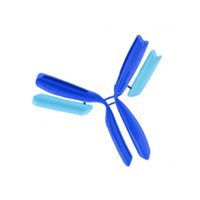DP10L Sigma-AldrichAnti-Polyoma Virus T Antigen (Ab-4) Mouse mAb (F4)
Recommended Products
Overview
| Replacement Information |
|---|
Key Spec Table
| Species Reactivity | Host | Antibody Type |
|---|---|---|
| Polyoma Infected Cells | M | Monoclonal Antibody |
| Description | |
|---|---|
| Overview | This product has been discontinued. Recognize polyoma virus large, middle, and small T antigens. |
| Catalogue Number | DP10L |
| Brand Family | Calbiochem® |
| Product Information | |
|---|---|
| Form | Lyophilized |
| Formulation | Lyophilized from a volatile buffer, 100 µg BSA. |
| Positive control | Polyoma infected 3T6 cells |
| Preservative | None |
| Quality Level | MQ100 |
| Biological Information | |
|---|---|
| Immunogen | Polyoma virus T antigen |
| Clone | F4 |
| Host | Mouse |
| Isotype | IgG₁ |
| Species Reactivity |
|
| Antibody Type | Monoclonal Antibody |
| Physicochemical Information |
|---|
| Dimensions |
|---|
| Materials Information |
|---|
| Toxicological Information |
|---|
| Safety Information according to GHS |
|---|
| Safety Information |
|---|
| Product Usage Statements |
|---|
| Packaging Information |
|---|
| Transport Information |
|---|
| Supplemental Information |
|---|
| Specifications |
|---|
| Global Trade Item Number | |
|---|---|
| Catalogue Number | GTIN |
| DP10L | 0 |
Documentation
Anti-Polyoma Virus T Antigen (Ab-4) Mouse mAb (F4) SDS
| Title |
|---|
Anti-Polyoma Virus T Antigen (Ab-4) Mouse mAb (F4) Certificates of Analysis
| Title | Lot Number |
|---|---|
| DP10L |
References
| Reference overview |
|---|
| Bolen, J.B., et al. 1984. Cell 38, 767. Courtneidge, S.A. and Smith A.E. 1984. EMBO J. 3, 585. Courtneidge, S.A. and Smith, A.E. 1983. Nature 303, 435. Eckhart, W. 1981. Adv. Cancer Res. 35, 1. Ito, Y., et al. 1980. J. Virol. 35, 219. Ito, Y. and Spurr, N. 1980. Cold Spring Harbor Symp. Quant. Biol. 44, 149. Turler, H. 1980. Mol. Cell. Biochem. 32, 63. Smith, A.E., et al. 1979. Cell 18, 915. Eckhart, W., et al. 1979. Cell 18, 925. Schaffhausen, B.S. and Benjamin, T.L. 1979. Cell 18, 935. |







